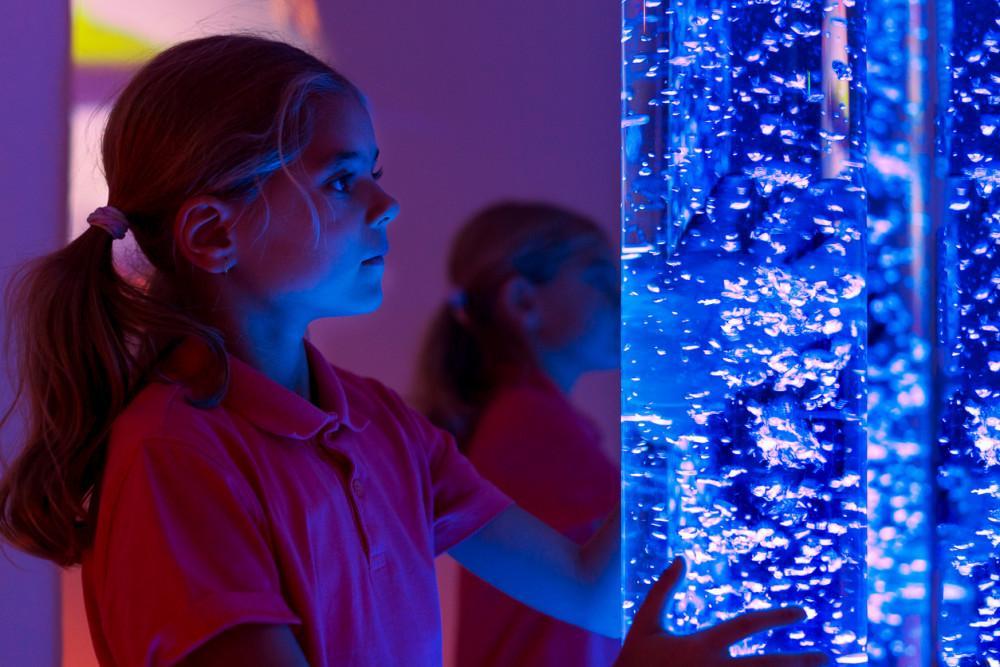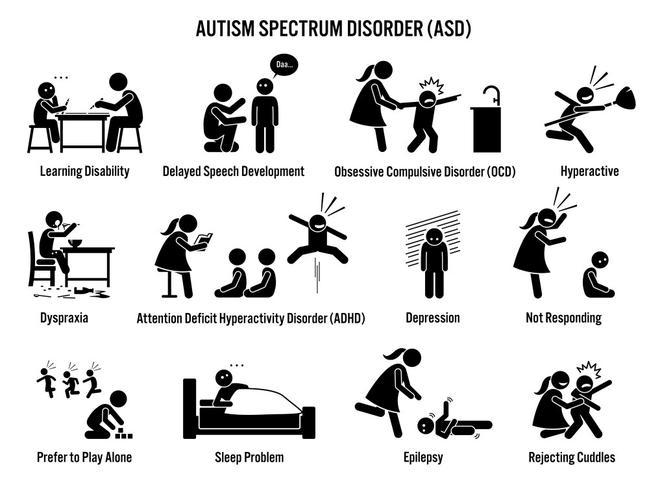
A Third of Eligible Migraine Patients Were Not Offered preventive therapy
Find out why a third of eligible migraine patients were not offered preventive therapy and

According to the CDC, between one and two percent of American children live with an autism spectrum disorder (ASD). Largely due to advances in medical understanding of autism and improved diagnostic techniques, diagnosis of ASD has increased steadily. Individuals with ASD live fulfilling lives and are valuable members of society. However, ASD may present certain difficulties in communication, adaptation, and independence. In the interview below, Dr. Pascal Saremsky, a pediatric neurologist at New York Neurology Associates, discusses the nature of autism spectrum disorders and the ways in which quality of life can be improved for those living with autism.
Dr Saremsky:
Asperger’s and Autism used to be thought of as distinct conditions, but presently the medical field sees these as existing along a spectrum of symptoms across several domains and of varying severity. A few symptoms alone may not be an indication of Autism Spectrum Disorder (ASD), but when there exists sufficient evidence for multiple symptoms in multiple domains, ASD may be present. They cover a broad range, but can be generally differentiated into deficits in the communication, socialization, adaptation, cognition, and sensorimotor domains. The symptoms are related but their underlying cause still remains unclear. However, several risk factors have been identified, including genetic components. A pediatric neurologist with experience dealing with childhood ASD is qualified to make the determination.

Dr Saremsky:
There is a common saying that “if you’ve met one child with autism, you’ve met one child with autism”. Every child is an individual and presents with ASD symptoms in different ways. One important point is that ASD does not specifically reflect intelligence, and in fact children with higher-functioning ASD commonly possess higher than average IQ levels. ASD symptoms can be thought of as existing in several related domains.
Children with ASD can be highly sensitive to environmental stimuli, such as ambient sounds (covering their ears in loud public places), bright or flashing lights, and textures of clothing and food. On the other hand, they may seek out certain stimuli, commonly exhibiting stimming or self-stimulatory behaviors. This is especially the case when they are feeling stressed, excited, or happy. Stimming may present as hand flapping, rocking back and forth, or spinning in circles. There may be difficulty with fine motor functions such as grasping, grabbing, and manipulation of objects such as pens. Children with ASD may present with balance and body coordination issues, and in some cases with hypotonia, which is characterized by “weakness in the core,” low muscle tone, and W-sitting with legs extended outward.

Children with ASD will commonly exhibit obsessions and compulsions with respect to their environment, daily routines, and rituals. They may experience substantial difficulty transitioning between activities. They may appear to be very much set in their ways, throwing tantrums or experiencing meltdowns when their expectations are challenged. Frustration may lead to aggressive or harmful behaviors directed at themselves or others. A common behavior is patterning, in which children with ASD will ritualistically arrange toys or other objects according to characteristics such as size and color.
ASD symptoms may present as communication difficulties. Verbally, there may be speech delays. They may have difficulty reciprocating verbally or mimicking sounds and words. Nonverbal communication, highly important for interacting with others, may also constitute a challenge. Young children with ASD might, for instance, have difficulty understanding the significance of nonverbal signals such as pointing. Lack of eye contact and difficulty integrating contextual social cues can hamper communication. Children with ASD may exhibit low emotional perceptiveness as well as difficulty with empathy and understanding others’ emotions. These communication issues, in turn, can result in further difficulties in socialization with their peers.
Socialization involves a number of delicate psychological and social negotiations which may be challenging for children with ASD. They may experience difficulty in interacting with friends and peers at an age-appropriate level. Children with ASD may have trouble negotiating boundaries and personal space, or understanding social expectations and consequences, making it difficult to make and maintain friendships. Social expression of emotions such as remorse may be lacking. They may have difficulty with sarcasm, humor, and abstract or symbolic play, instead routinely engage in solitary play and showing lack of interest in playing with others. Cooperative, symbolic play (such as playing house) may be difficult since children with ASD focus on the concrete rather than abstract meanings of things. Socialization issues may lead to alienation, thus resulting in additional social and psychological issues.

Dr Saremsky:
I have seen thousands of children with ASD symptoms, and each one required an approach tailored to their specific circumstances. I prefer an approach that is holistic, multidisciplinary, individualized, extending throughout the patient’s childhood and adolescence. I try to avoid risky tests and procedures, such as MRIs which may require the use of sedation in children with ASD. I am generally conservative when it comes to medication, but in some cases it may be necessary when the benefits outweigh the risks. Iit is best to use the minimally necessary dose as best tolerated, calibrating over time.
The first step is to ascertain the presence and severity of ASD symptoms. After a neurological evaluation and general medical assessment, a psycho-educational evaluation is ordered by the school district, along with behavioral, occupational, and speech evaluations. This helps to begin the process of obtaining institutional assistance for the child. Genetic screening tests for risk factors than may provide further evidence of ASD.
After identifying potential symptoms of ASD, it is important to rule out the presence of any comorbid conditions, and if they exist, to treat them. Obsessive-Compulsive Disorder (OCD), Attention-Deficit Hyperactivity Disorder (ADHD), Oppositional Defiant Disorder, sleep issues, tics, Tourette’s Syndrome, anxiety, and childhood seizures occur more commonly in children with ASD. If communication issues are present, ophthalmological and auditory tests may be performed to rule out any problems with the child’s eyesight or hearing. Children with ASD have a greater incidence of seizures, so electroencephalograms (EEGs) and a good history can help to determine if this is the case. This is especially advised if a child has staring spells. An EKG can help to rule out heart conditions that may complicate the use of certain medications, and a full blood and urine workup can help to catch any metabolic or genetic disorders. All of these conditions, if left untreated, may make ASD symptoms worse, and conversely, ASD may worsen them. For this reason, my approach to treating ASD is integral and holistic, addressing physical, psychological, social, and environmental factors to maximize a child’s wellbeing.

Dr Saremsky:
Early intervention is key – the sooner the child is diagnosed, the sooner medical and institutional help can be rendered. The sooner treatment begins, the better the results in the long-term, and the less chance of comorbid conditions developing or worsening. I have had patients, children with significant ASD symptoms, who after extensive treatment and institutional support no longer carry the diagnosis.
A consultation with a pediatric neurologist will help to ensure a thorough and accurate diagnosis. A formal medical diagnosis can then open doors to crucial services, care, and institutional support from schools, employers, and specialized programs that otherwise would not be available. Key among these is the individualized education plan (IEP), through which children with ASD can obtain access to specialized instruction, testing, and classroom environments that help the child to perform better in school.
Working together with parents, I create an individually-tailored multifaceted plan that may include an IEP, medical treatment, behavioral therapy, speech therapy, social skills building, occupational therapy, and physical therapy. These approaches together can dramatically improve a child’s performance and overall wellbeing. Again, the key is early diagnosis and the creation of a treatment plan as soon as possible.
Dr. Pascal Saremsky
Dr. Pascal Saremsky is a board-certified pediatric neurologist and pediatric epileptologist. He completed a fellowship in pediatric neurology at the Albert Einstein College of Medicine and a fellowship in pediatric epilepsy and neurophysiology at New York Presbyterian Hospital. He specializes in treating patients from newborns to early adulthood with a personalized and friendly approach that helps his young patients and their parents feel comfortable under his care.
If you believe your child may have an autism spectrum disorder, schedule a consultation with a pediatric neurologist today.
See Also:
Dr. Pascal Saremsky

A Third of Eligible Migraine Patients Were Not Offered preventive therapy
Find out why a third of eligible migraine patients were not offered preventive therapy and

New NYNA Tourette Syndrome Study
Learn how NY Neurology Associates is advancing Tourette syndrome care with innovative treatments and a

Seizures: Understanding and Overview
Discover what causes seizures, how to recognize key symptoms, and the steps that help keep
